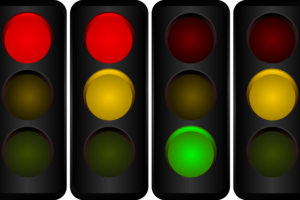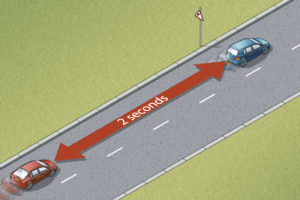Dual Carriageway Driving
Dual carriageway definition is at least one lane of traffic (usually two or more traveling in the same direction) which is divided by a central reservation and barrier that separates the other carriageway travelling in the opposite direction.
Regardless of the amount of lanes, it will remain a single carriageway unless separated by a physical barrier. Roads in the UK are categorised into:
- B roads – country or residential areas
- A roads – high speed single or dual carriageways
M roads – motorways
This tutorial explains the correct procedure for joining, driving and exiting dual carriageways plus other tips and advice for both learner driver and experienced drivers.
DUAL CARRIAGEWAY DRIVING TEST
Many driving test centres are situated on the edge of towns and cities. They are located in such areas so to provide as much diverse road types during a driving test as possible. Included in these road types are often dual carriageways.
Dual carriageways can be challenging for both experienced drivers and learner driver taking the driving test. This is often due to the high speeds involved along with the all-important observations. Finding a good driving instructor who is experienced in the area will have an excellent knowledge of the driving test routes, including the dual carriageways and roundabouts leading to them. These areas of the test routes can be difficult so becoming proficient in them will be of benefit.
JOINING DUAL CARRIAGEWAYS
You will join a dual carriageway from a slip road leading off either a road or roundabout. The speed at which you join the slip road varies depending on the circumstances. It is important to gain sufficient speed to equal those already on the carriageway. Joining the carriageway at 40 mph whilst traffic already on the carriageway is at a speed of 70 mph can be highly dangerous.
Traffic isn’t always travelling at 70 mph however. Observe traffic on the carriageway at the earliest opportunity. This can be from the road or roundabout or even from a bridge that crosses over the carriageway before you join. This will provide you with a good sense at which the speed you will need to reach before joining. Traffic especially during rush hour can be slow or even stationary as you join a dual carriageway. Be prepared to stop just before the junction line if necessary.
The key to joining a dual carriageway is to accelerate down the slip road to match the speed of those already on the carriageway. Whilst accelerating, make quick checks to the right and alternate with the direction you are traveling. Briskly keep checking between the two. Although the main focus should be in the direction you are traveling, brisk and frequent looks to the right is important.
As you are accelerating, mark your entrance point. This could be between 2 lorries for instance, but as tense moment as this may be, be confident and focus on your marked entrance point. This may require accelerating or slowing to safely enter the carriageway.
You will need to apply the MSPSL routine
Around half way down the slip road, you will need to apply the MSPSL routine. Here is an example of the MSPSL driving routine:
Check the interior and right mirror and signal to the right. Remember, observations should have started way back at the earliest point, so the position will depend on where you intend to join in relation to your speed. Speed is dependent on the traffic on the carriageway and as you join you will need to look in your interior mirror to ensure traffic isn’t too close behind you.
It is acceptable to join the carriageway a little too close to a vehicle in front of you that was already on the carriageway. If the gap you joined was a little small, this can be unavoidable. However, if this is the case, you must increase the distance between you and the vehicle in front. This can be done by either very gently slowing down (doing this too quickly is dangerous to vehicles behind) or better still is to overtake the vehicle if safe to do so and if keeping within the 70 mph speed limit.
Joining a dual carriageway is the most difficult part for most learner drivers. Providing you match the speed of the traffic on the carriageway, mark your joining place at the earliest opportunity, stick confidently with your joining place by use of accelerating or slowing, then with plenty of practice it becomes easy.
Tag:Driving, Theory test





